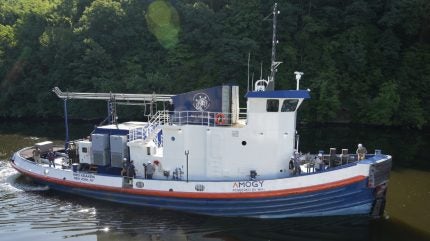
Maritime technology company Amogy has conducted the first sailing of its ammonia-powered demonstration vessel in a significant step for the development of its carbon-free solution.
The retrofitted NH3 Kraken tugboat conducted its first sailing with Amogy’s ammonia-to-electrical power system on a tributary of the Hudson River in New York, US in the largest and first maritime application of the technology.
CEO Seonghoon Woo said: “By demonstrating our technology on the water for the first time, we’ve gained invaluable knowledge that will help us move quickly to commercialization and real-world applications.
“The opportunity to decarbonize the maritime industry is within reach, and for Amogy, it’s just the beginning.”
The ‘ammonia-cracking’ technology uses the colourless gas as its primary fuel source before converting it into hydrogen and nitrogen, using the former to power integrated fuel cells.
How well do you really know your competitors?
Access the most comprehensive Company Profiles on the market, powered by GlobalData. Save hours of research. Gain competitive edge.

Thank you!
Your download email will arrive shortly
Not ready to buy yet? Download a free sample
We are confident about the unique quality of our Company Profiles. However, we want you to make the most beneficial decision for your business, so we offer a free sample that you can download by submitting the below form
By GlobalDataAmogy previously tested the technology at smaller scales, including a 200kW system used on a class eight truck, but the 1mW scale system used on the NH3 Kraken marks the final demonstration of the solution before the company begins deploying pilot projects.
The company has already seen a wide array of interest in its solutions with investment from major maritime players including Hanwha Ocean, Samsung Heavy Industries, and HD Hyundai Heavy Industries.
https://www.ship-technology.com/interviews/anastasija-kuprijanova-amogy-ammonia-qa/Speaking to Ship Technology earlier this year, Amogy’s director of maritime business development Anastasija Kuprijanova said the business was targeting full commercialisation of its technology in mid-2025.



